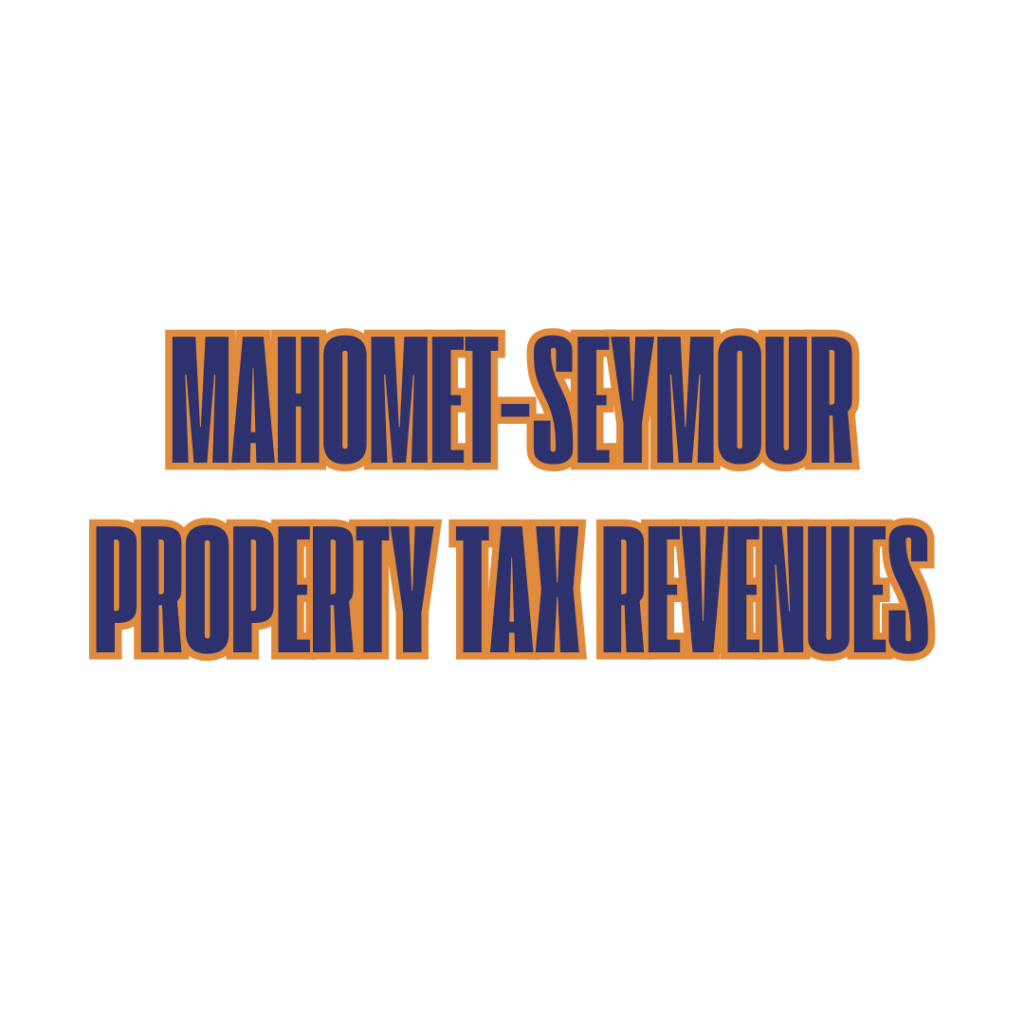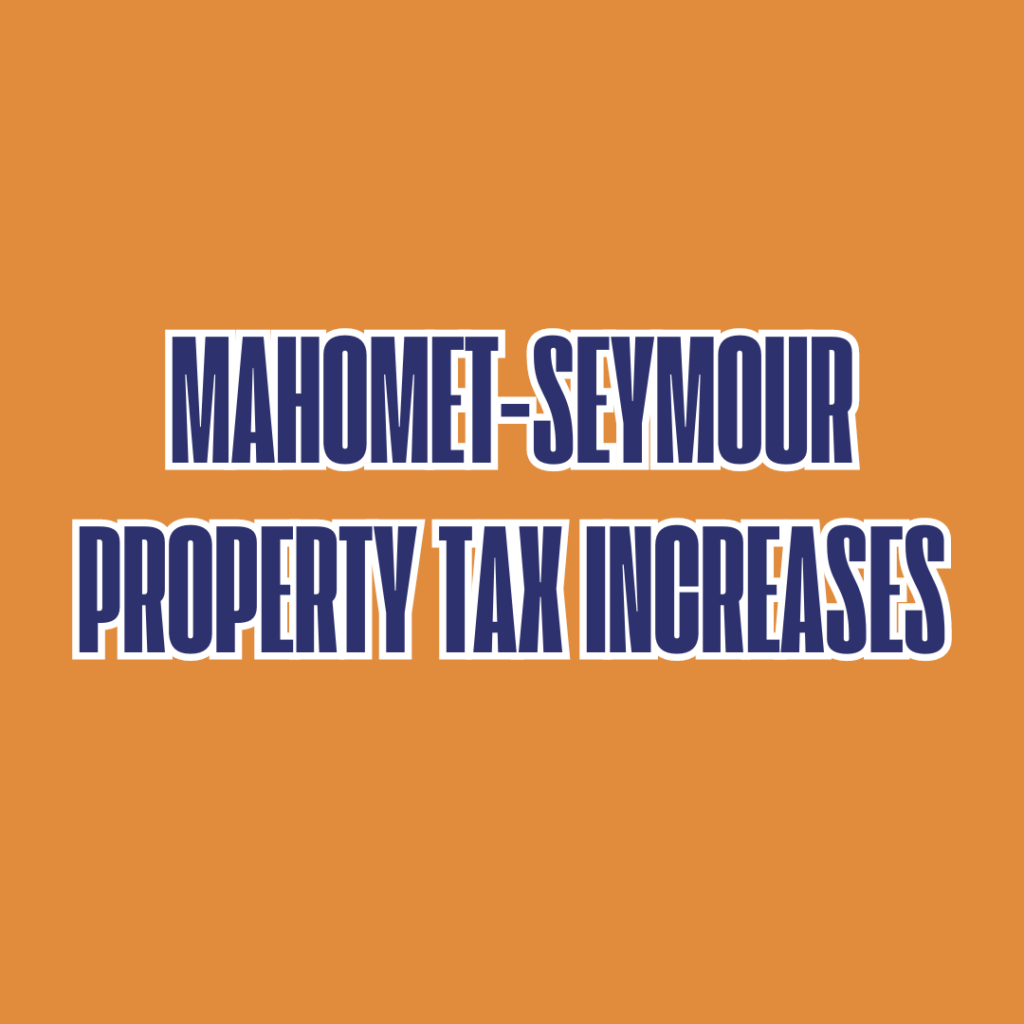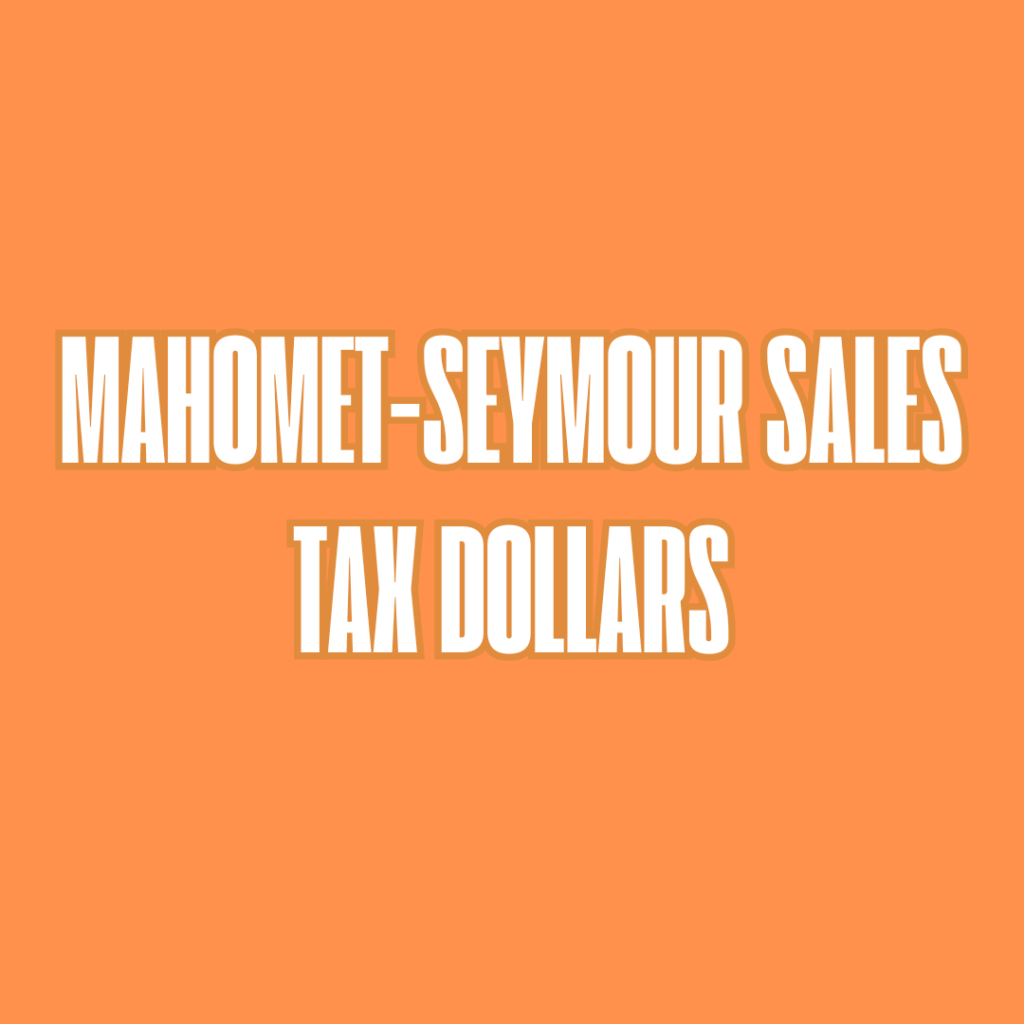
Mahomet-Seymour School District constituents may be stuck between a rock and a hard place.
While it’s clear that every school is struggling with space limitations, projections show that the proposed new facilities from the 2024 $112.8 million referendum will be at capacity within 10 years. By 2045, one year after the referendum would be fully paid off, schools are expected to reach maximum capacity—if not sooner.
Click here to see enrollment projections.
But if this referendum doesn’t pass, are there other alternatives to deal with the space issues that are only going to continue to compound as at least 300 more homes are built in the upcoming years?
The answer may be in some of the options the facilities committee saw as they narrowed down their referendum preferences in the summer of 2024.
Sales Tax Funds for Additions
One potential solution to the space issue is using sales tax revenue for facility improvements. The district has projected access to $80 million in sales tax funds, earmarked specifically for building upgrades. These funds will be available in stages: $10-$15 million in 2024, $25 million by 2029, and $30 million in 2030 as the Middletown Prairie Elementary bonds are paid off, according to a slide in a facility committee presentation this summer. It’s true those numbers don’t match up, but in addition to money being freed up when bonds are paid off, the sales tax fund is growing and will provide additional revenue.
Currently, the district plans to use $40 million of that money to make annual payments towards the $112.8 million referendum in order to keep the rate Mahomet-Seymour property owners pay at $.96 per $100 of home market value. They plan to use another $40 million in five to seven years to make upgrades to Mahomet-Seymour High School.
Instead, the district could use that money to make upgrades to the district’s current facilities, including expanding Mahomet-Seymour Junior High to 140,000 square feet (the same sq feet as the proposed junior high) for $38.2 million without a referendum, while dedicating another $2.2 million to renovate Lincoln Trail. While a referendum would be required for this next step, the district could use the remainder of the $80 million in sales tax money to build the new elementary school for $39.1 million. This would mean that a referendum would be required, but taxpayers would not see an increase in their property tax bill
As another alternative, facility committee members saw an option from the district’s architect, BLDD, that suggested that additions and renovations could be made at all of the schools and to take care of facility needs throughout the district for $75,000,000. This could be done with no increase to taxpayers.
While some constituents and the school district see some of Mahomet-Seymour’s older facilities as unusable or undesirable, the buildings certainly are not the oldest schools in Champaign County.
This was an argument used when selling Sangamon Elementary. The district sold the building as old and outdated because it did not have air conditioning. While the old part of the building was built in the 1960’s, the main part of the building that held most of the classrooms was built in 1988.
In the proposed facility plans, the Mahomet-Seymour School District plans to tear down the current junior high school at a cost of $1.5 million once a new junior high building is built south of that building. Mahomet-Seymour Junior High was built in 1960 with a 10 room addition and new music classrooms in the early 2000’s. Lincoln Trail Elementary opened in March 1967 with additions in 1970, with a fourth-grade wing addition in the late 1990s.
Perhaps this brings us to the next slide the facility committee saw this summer. In this scenario, the district could add 97,000 square feet for grades 2,3,6,7 and 8 for $46,075,000. The junior high and Lincoln Trail Elementary could receive an 11,300 square foot renovation for $2,542,500 and each of these three schools could receive site work for $6,000,000. BLDD showed the facility committee that these projects would cost a total of $54,617,500. This number doesn’t take into account a new transportation building or acquisition of new property.
A New High School Option
Some community members believe a new high school is the only way to provide a true long-term solution to accommodate the district’s growing student population. This would involve moving junior high students to the current high school and redistributing elementary students across the district’s two elementary schools and the junior high.
The facilities committee reviewed two proposals in 2024. One suggested building the new high school on the same property as the current building, but this idea wasn’t pursued. Another proposal involved building a new high school on 70 acres for $156.5 million, with additional costs for district-wide modifications totaling $249 million—an amount many felt was too high. A variation of this plan suggested building the high school on land near Middletown Prairie Elementary, but acquiring more land would be necessary.
Temporary Solutions for Classroom Space
While not long-term fixes, some short-term measures could help alleviate space concerns. For example, the new phone/clock/bell system at the junior high could be programmed so the passing periods for each grade level occur at different times–this would reduce the congestion in the hallways to ⅓ of the current levels. Another idea that would be a good short-term measure would be utilizing classrooms during teachers’ prep hours at the junior high and high school to provide additional learning spaces. Additionally, moving district administrative offices to commercial spaces would free up smaller rooms at Middletown Prairie Elementary for specialized services, allowing current service rooms to be converted into classrooms.
While these solutions are only temporary, they could provide some relief until larger renovations or additions are completed. The district hopes to have a new junior high school built by 2027, which raises the question of whether other building additions could be completed by then as well.
The District May Need More Elementary Schools
Some see the sale of Sangamon Elementary as space the district could desperately use right now. With at least another 300 dwellings already approved in the Village of Mahomet, incorporating the current junior high school into the current facilities plan may help property taxpayers’ burden in future years, especially if the district believes the $112.8 million plan will reach 300 students per grade in 10 years and 350 students per grade in 20 years.
The proposed elementary school will sit on the same 30-acre property south of Middletown Prairie Elementary, limiting any expansion opportunities for both buildings due to the new South Mahomet Road. The district also owns 40 acres just south of South Mahomet Road. It is unclear as to why the district would put both elementary schools on the same 30-acre property instead of utilizing the 40 acres. Should they need more classrooms in 20 years, putting the new elementary school on the 40 acres would allow for expansion in the future. The current plan has the both elementary buildings locked between roads and parking lots.
The Mahomet-Seymour School District has recognized that the current elementary school setup with 10-12 classes per grade is unusual in the state of Illinois. Seeing as the district is 15 miles long and 7 miles wide with residential developments growing in the south and east parts of the district, it may be worthwhile to consider a plan with several elementary schools located within the Mahomet-Seymour School District, bringing down the string of classrooms per grade, and putting more grades in each building (for example, having two K-5 buildings). Financial projections for this option have not been vetted, but seeing as the property east of Middletown Prairie is prime for substantial residential development, considering an option like this could satisfy the district’s needs long-term.











